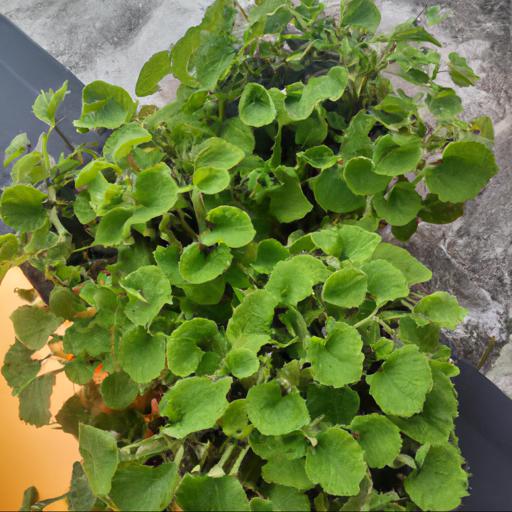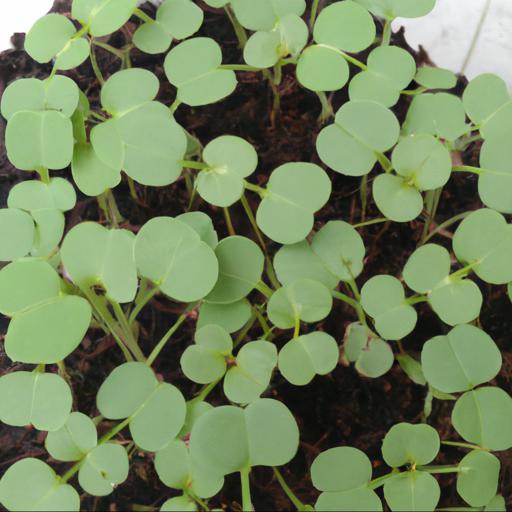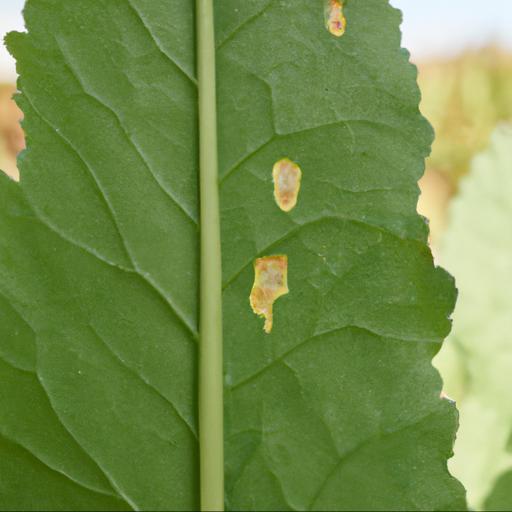Soleirolia soleirolii, also known as baby’s tears or mind-your-own-business, is a low-growing, evergreen perennial plant native to the Mediterranean region. It is often used as a ground cover in gardens, as it is easy to care for and grows quickly.
It has small, round leaves and can be grown in both full sun and partial shade. Its bright green foliage provides a lush, attractive look to any garden. It is also known for its ability to thrive in a variety of soils, making it an excellent choice for those with limited gardening space.
With proper care, Soleirolia soleirolii can provide a long-lasting, low-maintenance addition to your garden.
Benefits of growing soleirolia soleirolii

As a UK garden expert, I can authoritatively say that there is no better way of enhancing the beauty and lushness of your garden than by cultivating Soleirolia soleirolii. This captivating plant, often known as ‘baby’s tears’ and ‘mind-your-own-business’, has a number of benefits and is one of the greatest, yet most underrated garden plants.
Soleirolia soleirolii has a low-growing carpet-like habit, making it an ideal ground cover, especially in areas where lawn mowing is impractical. Its delicate, moss-like leaves are held on straggling stems that form an evergreen mat which can help to suppress weeds and create a vibrant green vista with minimal upkeep. Additionally, they tolerate deep shade as well as areas exposed to both sunlight and wind and will even survive in a range of soils, provided they are kept moist.
This versatile plant is also great for filling up gaps between pavers and stones, providing a smooth transition and adding a soft natural aesthetic. What’s more, due to its low-growing habit, it can be a companion to a number of other plants, allowing flowers to grow alongside it without competing. Overall, Soleirolia soleirolii is the perfect choice for any garden.
Its versatility and low-maintenance nature make it an ideal ground cover that will add a fresh and vibrant look to your garden. When planted in the right location, this delightful plant will bring a calming presence that will be sure to delight the senses.
Tips for growing soleirolia soleirolii

:When it comes to growing Soleirolia soleirolii, known commonly as baby’s tears or angel’s tears, there are a few tips to keep in mind to ensure healthy and beautiful plants. This popular houseplant has delicate, lacy foliage which looks beautiful spilling over the side of a pot, and properly taken care of, it can bring years of enjoyment. Here are some tips to get the most out of your Soleirolia soleirolii:First and foremost, this green-thumb friendly option prefers moist, well-draining soil.
Although it’s recommended to keep the soil moist, over-watering can result in root rot, so err on the side of caution. It does best in indirect light and in moderate temperatures, meaning no direct sun and no extreme shifts in temperature.
To make sure your soil stays moist and your baby’s tears stay healthy, a layer of mulch can go a long way. If your baby’s tears are taking over the pot, fear not — Soleirolia soleirolii loves being trimmed.
It’s also a good idea to separate the root ball of your Soleirolia soleirolii if it’s become too crowded, as they don’t appreciate too much competition in their home. This is relatively easy to do — after the root ball is disengaged, cut the roots at the base and place the two plants into separate pots. Finally, keep an eye out for pests or signs of a polka-dot fungus.
If you haven’t noticed any of these issues, fertilizing your Soleirolia soleirolii every four weeks should do the trick. A well-balanced fertilizer goes a long way to keep this delicate yet hardy houseplant looking its best. With these tips in mind, you should have a thriving Soleirolia soleirolii in no time!
Common problems with soleirolia soleirolii

. When it comes to Soleirolia soleirolii, also known as baby’s tears, there are some common problems that gardeners may encounter. This low-lying, dense, evergreen groundcover is highly sought-after, with its dainty leaves and versatile growth habit.
Its uses range from edging pathways and rock gardens, to filling in gaps on walls, terraces or at the base of trees. Unfortunately, there are a few potential issues to be aware of before opting for Soleirolia soleirolii in the garden.
One of the most frequent problems with baby’s tears is the potential for overgrowth. This fast-growing groundcover has a strong tendency to take over a garden space, if left unchecked. The typical spreading rate for Soleirolia soleirolii can cover up to 6 feet in a single year, climbing to 15 feet if the growth is left to its own devices.
To combat this, it’s important to maintain regular trimming of the plant and to spread a two-inch deep layer of mulch to help slow down the growth. The second common problem is disease susceptibility.
Baby’s tears are not only a fast-growing species, they are also a particularly fragile one. The majority of disease problems result from an increase in the pH of the soil, or an excess of nitrogen.
To avoid this issue, water plants with filtered rainwater, as excessive exposure to tap water or fertilizers can lead to an increase in disease susceptibility. Additionally, it is important to keep weeds in the area down, as these can draw attention away from the plant and generally weaken it. Finally, Soleirolia soleirolii can be sensitive to waterlogging, particularly during the winter months.
It’s important to be sure that the soil in the area provides good drainage and that beds are not allowed to become stagnant. This can be achieved through the use of raised beds, or through several layers of organic matter beneath the soil. For waterlogged areas, use other methods of groundcover such as creeping thyme or ajuga. Although Soleirolia soleirolii can pose some potential problems in the garden, its toughness and versatility are part of its appeal. The considerable benefits far outweigh the potential issues, and this hardy perennial is a great addition to any landscape. With a good understanding of the potential issues and an awareness of the environment in which it is planted, Soleirolia soleirolii can be a low-maintenance and attractive solution for gardeners everywhere.
Our video recommendation
Bottom Line
Soleirolia soleirolii, commonly known as baby’s tears, is an evergreen perennial plant native to the Mediterranean region. It is an easy-to-grow plant that is perfect for adding texture and color to any garden. It is tolerant of both sun and shade, and is a great choice for hanging baskets and rock gardens.
Its small, round leaves are a bright green color and its delicate white flowers are a beautiful addition to any garden. With its low maintenance requirements, Soleirolia soleirolii is an ideal plant for any gardener looking for a unique and beautiful addition to their landscape.
FAQ
What are the common names for Soleirolia soleirolii?
The common names for Soleirolia soleirolii are Baby’s Tears, Mind-Your-Own-Business, and Corsican Curse.
What type of soil is best for growing Soleirolia soleirolii?
Well-draining, nutrient-rich, slightly acidic soil is best for growing Soleirolia soleirolii.
How often should Soleirolia soleirolii be watered?
Soleirolia soleirolii should be watered regularly, but not too often. During the growing season, it should be watered when the top inch of soil is dry. In the winter, it should be watered less frequently, only when the soil is completely dry.
What are the benefits of growing Soleirolia soleirolii?
The benefits of growing Soleirolia soleirolii include its ability to thrive in shady areas, its ability to suppress weeds, its ability to retain moisture in the soil, and its attractive foliage. It is also a low-maintenance plant that requires little care.
How can Soleirolia soleirolii be propagated?
Soleirolia soleirolii can be propagated by division of the root system, stem cuttings, or by seed.
What pests and diseases can affect Soleirolia soleirolii?
Common pests and diseases that can affect Soleirolia soleirolii include powdery mildew, aphids, slugs, and snails.

